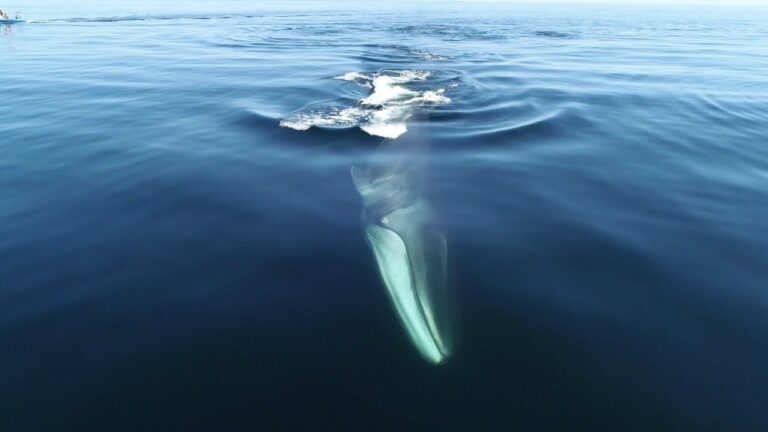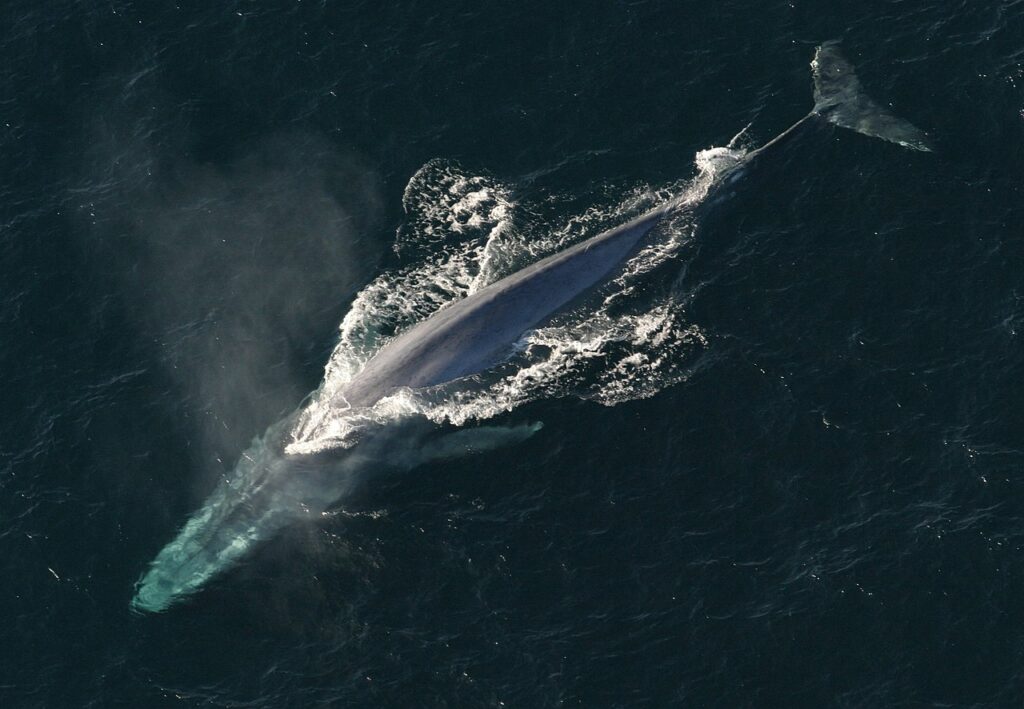Reykjavík’s Whale Watching Season

Are you planning a trip to Iceland and contemplating the best time for an unforgettable whale watching experience? When exactly is the whale watching season in Iceland? If you’re considering going on a whale watching excursion from Reykjavík, you’re in for a treat, as Faxaflói Bay boasts incredible wildlife sightings all year round.
At Sea Trips Reykjavík, we take pride in offering whale watching tours throughout the year. While the majestic creatures of the sea grace our waters year-round, the peak season for whale sightings typically spans from May to September and you could consider that the classic whale watching season. This period coincides with the presence of puffins. However, there is so much wildlife to see during spring, fall, and winter.
What animals can you spot during the whale watching season; summer months?
The summer months welcome the annual migration of species such as blue whales and humpback whales. They travel towards their birthing grounds in warmer waters.
During the summer months, Faxaflói Bay becomes a bustling hub of marine activity, offering a glimpse into the lives of its inhabitants. That’s why the summer months are often considered the whale watching season, it is however not the only good time to experience the whales in their natural habitat. Among the most notable sightings are the Blue whales, the largest animals on the planet. These gentle giants migrate to Icelandic waters to feed on krill and plankton, showcasing impressive acrobatic displays such as breaching and fluking.

Humpback whales also make their presence known, renowned for their distinctive songs and playful behavior. These social creatures often engage in behaviors such as breaching, tail slapping, and flipper waving, providing once in a lifetime performances for lucky spectators.
Additionally, Minke whales are frequently spotted during the summer months, known for their elusive nature and sleek, streamlined bodies. These agile hunters exhibit remarkable feeding strategies, including lunge feeding and bubble netting, as they traverse the nutrient-rich waters of Faxaflói Bay.
Atlantic puffins, affectionately known as the “clowns of the sea” can be seen out on the ocean during the summer months. People often think that you need to go on a special puffin tour to see them or venture far from Reykjavík, but they are often visible during our whale watching tours.
Puffins are highly social creatures, forming large colonies known as “puffinries” on coastal cliffs and islands. These bustling communities come alive with the hustle and bustle of nesting pairs, as puffins diligently tend to their burrows and care for their single egg. With their remarkable flying skills, puffins effortlessly dive into the ocean in search of small fish, such as sand eels and herring, which they capture in their specialized beaks before returning to their cliffside homes. Observing these charismatic seabirds in their natural habitat is a highlight of summer whale watching tours.
What animals can you spot during the winter months?
Our guests have the opportunity to witness an impressive array of marine life, including white-beaked dolphins, killer whales, and harbor porpoises during winter months. These resilient creatures thrive in the cold waters surrounding Iceland, making them accessible for viewing throughout the year.

The killer whale, or orca, is known for its distinctive black-and-white coloring and formidable hunting prowess. These apex predators form tight-knit family pods and display complex social behaviors, including cooperative hunting strategies and vocal communication through clicks, whistles, and calls.
Additionally, harbor porpoises continue to thrive in the waters of Faxaflói Bay, showcasing their agility and speed as they navigate the icy depths in search of prey. These diminutive cetaceans, often referred to as the “puffing pig,” are characterized by their small size and playful demeanor, making them a delightful sight for winter whale watchers.
Furthermore, the white-beaked dolphin remains a year-round resident of Icelandic waters, braving the winter chill with its sleek body and distinctive white markings. With their acrobatic displays, white-beaked dolphins never fail to entertain observers.
Your won’t only be seeing whales during the winter whale watching season but also birds:
Northern Gannet: As you embark on a winter whale watching tour in Iceland, keep your gaze sharp for the Northern Gannet. These seabirds are known for their striking appearance and impressive diving skills. With wings spanning up to six feet, they gracefully soar above the icy waters before plunging headfirst to catch their prey.
Fulmar and Kittiwake: Scan the cliffs and rocky outcrops, and you may spot the Fulmar and Kittiwake, two more species that call Iceland’s winter waters home. Fulmars, with their tube-like noses and wide wingspans, are expert gliders, effortlessly riding the cold Arctic winds. Kittiwakes, with their distinctive white and gray plumage, are often seen nesting precariously on sheer cliffs.
Eider Ducks and Gulls: Closer to shore, keep an eye out for the Eider Ducks and various species of gulls. Eider Ducks, with their colorful plumage and buoyant demeanor, are a common sight on Icelandic waters, often seen paddling serenely in sheltered coves.
Our commitment to delivering exceptional experiences doesn’t wane during the winter months. While the winter season may limit certain activities, such as RIB speedboat trips, our cruise ship and boat tours continue to offer whale watching tours.
While puffins may bid farewell for the winter season, winter visitors have the chance to witness the northern lights from the tranquil waters of Faxaflói Bay. Our northern lights tours provide a unique opportunity to enjoy this natural phenomenon away from the city lights.
While summer boasts milder weather conditions, providing ideal opportunities for extended outdoor viewing, our boats are equipped with heated interior spaces for your comfort.
In conclusion, whether you’re planning your visit during the summer months or the winter season, Sea Trips Reykjavík offers unforgettable whale watching adventures year-round. With our knowledgeable guides you’re guaranteed an immersive experience surrounded by the beauty of Faxaflói Bay.
One of the many conveniences of going whale watching in Reykjavík is the accessibility of the Old Harbor. Situated within walking distance of the city center, the Old Harbor offers easy access to Sea Trips Reykjavík’s departure point. After a whale watching tour, visitors can explore the surroundings of the Old Harbor or even the lesser known Grandi area. If you are hungry after the tour the best place to stop for a bite is The Old Harbour House.

